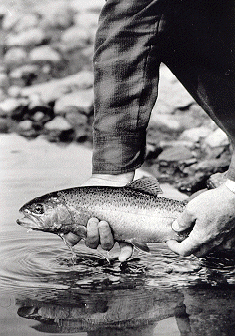Catch & Release : The Future
 I bet you can still remember the biggest fish that got away...but can you remember the last fish you caught and ate? As true fishermen, the thrill is not the trophy, but the hunt and epic fight. In order to safeguard this sport for the future generations, it is important to instill the principle of "Catch & Release" as opposed to just being "Meat Hunter". Here are some guidelines from the Catch & Release Foundation.
I bet you can still remember the biggest fish that got away...but can you remember the last fish you caught and ate? As true fishermen, the thrill is not the trophy, but the hunt and epic fight. In order to safeguard this sport for the future generations, it is important to instill the principle of "Catch & Release" as opposed to just being "Meat Hunter". Here are some guidelines from the Catch & Release Foundation.These guidelines are generic but remembering them will give all species of fish a greater chance of survival. A fish is too valuable to be caught and enjoyed only once, be responsible.
Use barbless hooks or circle hooks (especially when bait fishing), or pinch the barb flat with pliers. If you use a net, use one made of cotton mesh or rubber. It is less harmful to fish scales, gills and eyes. Only net your fish if it is the only way to control it.
Wet your hands when handling fish. Dry hands and gloves will remove its protective mucous (slime) coating and scales. These protective layers help prevent infection by waterborne disease. Do not beach a fish or let it flop around the deck of the boat.
Try not to remove the fish from the water. If you must, be quick and gentle, do not squeeze the fish. Do not hold the fish near the gills or eyes (Pike, Muskie, Snook, etc.) Needle nose pliers, hemostats, de-hookers etc., will speed up the removal of a deep set hook.
To revive the fish, hold it under the belly and by the tail, keep it in an upright position underwater, do not move the fish back and forth** (this is also a good time to get a measurement and take a photo). If you are fishing in a river or stream, hold the fish facing the current. Be patient and give the fish as much time as it needs to recover and swim away on its own.



0 Comments:
Post a Comment
<< Home